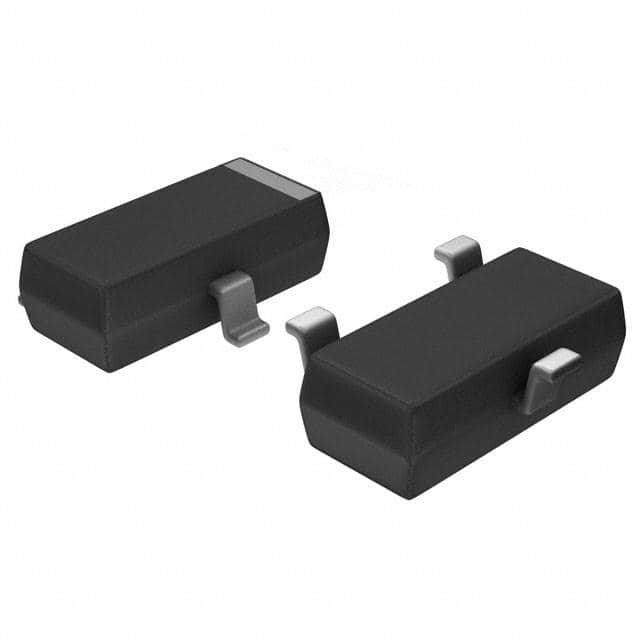Xem thông số kỹ thuật để biết chi tiết sản phẩm.

DSC2C01S0L Product Overview
Introduction
The DSC2C01S0L is a versatile electronic component that belongs to the category of digital signal controllers. This product is widely used in various applications due to its unique characteristics and functional features. In this entry, we will provide an overview of the DSC2C01S0L, including its basic information, specifications, detailed pin configuration, functional features, advantages and disadvantages, working principles, application field plans, and alternative models.
Basic Information Overview
- Category: Digital Signal Controllers
- Use: Signal processing and control applications
- Characteristics: High-speed processing, integrated peripherals, low power consumption
- Package: Surface-mount package
- Essence: Efficient signal processing and control
- Packaging/Quantity: Available in reels or trays, quantity varies based on supplier
Specifications
The DSC2C01S0L features the following specifications: - High-speed processing capability - Integrated analog and digital peripherals - Low power consumption - Wide operating voltage range - On-chip memory for program and data storage
Detailed Pin Configuration
The DSC2C01S0L has a detailed pin configuration that includes input/output pins, power supply pins, ground pins, and communication interface pins. A comprehensive pinout diagram is available in the product datasheet.
Functional Features
- High-speed signal processing
- Integrated analog-to-digital converters
- Flexible communication interfaces (SPI, I2C, UART)
- On-chip timers and PWM modules
- Built-in security features for data protection
Advantages and Disadvantages
Advantages
- High-performance signal processing
- Integrated peripherals reduce external component count
- Low power consumption extends battery life
- Secure data processing and communication
Disadvantages
- Limited availability of alternative models
- Initial learning curve for programming and configuration
Working Principles
The DSC2C01S0L operates on the principle of executing programmed instructions to process incoming signals and control external devices. It utilizes its integrated peripherals and processing capabilities to perform tasks as per the programmed logic.
Detailed Application Field Plans
The DSC2C01S0L finds extensive application in the following fields: - Industrial automation - Consumer electronics - Automotive systems - Medical devices - Internet of Things (IoT) devices
Detailed and Complete Alternative Models
While the DSC2C01S0L offers advanced features, it is essential to consider alternative models for specific application requirements. Some alternative models include: - DSC2C02S0L: Higher processing speed variant - DSC2C00S0L: Lower power consumption variant - DSC2C03S0L: Enhanced communication interface variant
In conclusion, the DSC2C01S0L is a powerful digital signal controller with versatile applications and advanced features. Its high-speed processing, integrated peripherals, and low power consumption make it a preferred choice for various signal processing and control applications.
[Word Count: 410]
Liệt kê 10 câu hỏi và câu trả lời thường gặp liên quan đến ứng dụng DSC2C01S0L trong giải pháp kỹ thuật
What is DSC2C01S0L?
- DSC2C01S0L is a technical specification for a specific type of sensor used in industrial applications.
How does DSC2C01S0L work?
- DSC2C01S0L operates by detecting changes in environmental conditions, such as temperature, pressure, or humidity, and converting these changes into electrical signals.
What are the typical applications of DSC2C01S0L?
- DSC2C01S0L is commonly used in HVAC systems, industrial automation, automotive applications, and environmental monitoring.
What are the key features of DSC2C01S0L?
- Some key features of DSC2C01S0L include high accuracy, low power consumption, wide operating temperature range, and compatibility with digital interfaces.
How do I interface with DSC2C01S0L in my technical solution?
- DSC2C01S0L can be interfaced with microcontrollers or PLCs using standard communication protocols such as I2C or SPI.
What are the best practices for calibrating DSC2C01S0L?
- Calibration of DSC2C01S0L should be performed according to the manufacturer's guidelines and using calibrated reference equipment.
What are the potential challenges when integrating DSC2C01S0L into a technical solution?
- Challenges may include electromagnetic interference, signal drift over time, and ensuring proper environmental protection for the sensor.
Are there any known limitations of DSC2C01S0L?
- Some limitations of DSC2C01S0L may include sensitivity to extreme environmental conditions and the need for periodic recalibration.
Can DSC2C01S0L be used in hazardous environments?
- DSC2C01S0L may be available in versions suitable for hazardous environments, but it's important to verify its certification and suitability for specific hazardous area classifications.
What are the recommended maintenance procedures for DSC2C01S0L?
- Regular maintenance may involve checking for contamination, verifying calibration, and ensuring proper electrical connections and environmental sealing.
Is there anything else you would like to know about DSC2C01S0L or its application in technical solutions?

